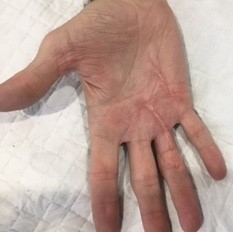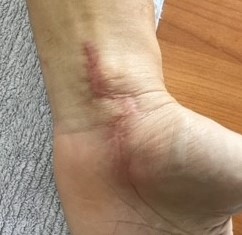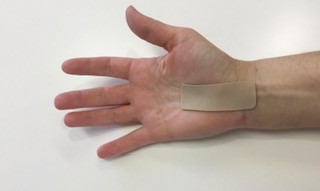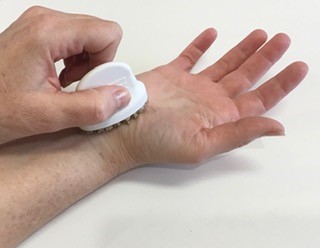
A scar develops as part of the natural healing process following the skin surface being injured; this may include a burn, traumatic injury or surgery. Typically, scar tissue begins to fill in the wound within 2-3 days of the injury occurring and can continue to develop for many weeks and months.
During the early phase of scar formation, the scar is referred to as “immature” with the scar usually appearing red. This phase can continue for up to 18months to 2 years. As the scar begins to “mature”, it should become increasingly more flat, pale and soft. It is best to treat the scar during the early phases of healing, however treatment can also be beneficial for older, mature scars.

Why are scars so important?
Scars can be distressing for some people, limiting their movement, causing pain and discomfort and/or affecting their appearance and psychological wellbeing.
Movement; As scars heal, they can become thick and stick to underlying structures (muscles, tendons, nerves, bones and blood vessels) if not managed appropriately. There are many important moving structures that lie just under the surface of your skin, specifically throughout the hands and forearms. If the scar sticks down onto these structures, it can limit your movement and cause discomfort during activity, not only at the scar site but also surrounding areas.
For example, a thick scar to the palm of your hand may stick to the tendons or nerves passing under the scar, potentially limiting your ability to straighten your fingers, make a fist and/or result in sensation changes throughout the hand. This can affect your ability to complete daily tasks, such as driving, working, playing sport or simply carrying/holding items.
Sensation; Some scars, if not managed appropriately, can remain painful, and become increasingly sensitivity or numb. It is important to manage the sensation of scars as you may have difficulty using that area in activity due to pain or discomfort or you may be at risk of further injury (such as burns) if the area remains numb.
Appearance; Some people may find the appearance of their scar to be distressing or cause people to feel uncomfortable when others see their scars. Overtime this can affect your psychological wellbeing and limit your engagement in enjoyable and/or necessary tasks. How you feel about your scar can limit your ability to treat the scar appropriately and can result in the development of a problematic scar (increased sensitivity, restricted movement etc). As scars heal, they can become raised, firm and red
How do I know if my scar is problematic?
There are many factors that may lead to a problematic scar, including initial wound management, length of time for wound to heal, location on the body, skin type, skin pigmentation, mobility of surrounding areas and the commencement of scar management.
All scars should be monitored carefully. If you are concerned about your scar, please contact our clinic to book an appointment. Our therapists will review your scar colour, texture, firmness, height, width, sensitivity and any restrictions on movement.
How can my therapist help with my scar?
After your therapist has reviewed your scar, they may prescribe a home exercise program for you to complete as well as use therapeutic treatments during your consultation. Such treatments may include;
- Scar massage;
- Heat therapy;
- Use of modalities (eg Ultrasound therapy or InterX treatment);
- Pressure/Compression therapy;
- Scar Taping;
- Scar mobilisation;
- Silicone Therapy;
- Education and self management;
- Exercise prescription or splinting may be recommended to lengthen tight scar tissue
What does scar management help to prevent?
- Pain during use of area
- Altered sensation
- Restricted movement
- Scar thickening and firmness
- Scar appearance and presentation
- Limitations in activity
To book an appointment with one of our therapists, please contact us today!
Written by Carissa Luck – Occupational Therapist

